World War 2 Flashcards
0.0(0)
0.0(0)
Card Sorting
1/23
Earn XP
Description and Tags
Study Analytics
Name | Mastery | Learn | Test | Matching | Spaced |
|---|
No study sessions yet.
24 Terms
1
New cards
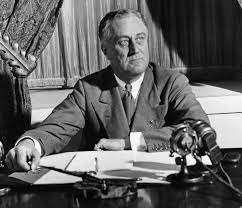
FDR
* Strategy was defeating Germany 1st
* Met with allies "The Big Three" during the war at
conferences like Casablanca, Cairo, Tehran, and Yalta
* Signed Executive Order 9066 which authorized internment
of 110,000 "Issei" and "Nisei" (2nd Gen. Japanese
Americans)
* Said US would be an "Arsenal of Democracy"
- Died April 12, 1945
* Met with allies "The Big Three" during the war at
conferences like Casablanca, Cairo, Tehran, and Yalta
* Signed Executive Order 9066 which authorized internment
of 110,000 "Issei" and "Nisei" (2nd Gen. Japanese
Americans)
* Said US would be an "Arsenal of Democracy"
- Died April 12, 1945
2
New cards

Harry S. Truman
* Ordered Atomic Bombing of Hiroshima and Nagasaki in
1945
- 33rd President (1945-1953
- 3rd Vice President to serve with FDR
- Took office after FDR death
- Though new to office, he led America and presided of VE
Day and VJ Day
1945
- 33rd President (1945-1953
- 3rd Vice President to serve with FDR
- Took office after FDR death
- Though new to office, he led America and presided of VE
Day and VJ Day
3
New cards
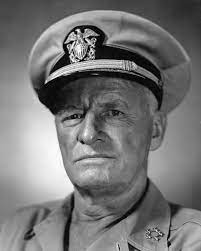
Admiral Chester Nimitz
* Turned around US's fortune in Battle of Midway
* Kamikaze attacks off Okinawa led him to resist plans to
invade mainland Japan
- After Pearl Harbor, he took command of US Navy in Pacific
- Closed war with operations in the Leyte Gulf and Okinawa
* Kamikaze attacks off Okinawa led him to resist plans to
invade mainland Japan
- After Pearl Harbor, he took command of US Navy in Pacific
- Closed war with operations in the Leyte Gulf and Okinawa
4
New cards

General Douglas MacArthur
* He promised "I shall return" after being ordered by FDR to
abandon the Philippines
* His strategy of maneuver, island hopping, result in fewer
casualties under his command
- Returned to the Philippines in 1945
- Presided over Japanese surrender in Tokyo Bay on Sept. 2,
1945
abandon the Philippines
* His strategy of maneuver, island hopping, result in fewer
casualties under his command
- Returned to the Philippines in 1945
- Presided over Japanese surrender in Tokyo Bay on Sept. 2,
1945
5
New cards
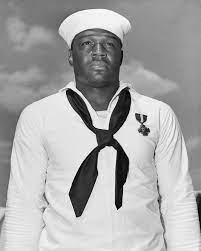
Dori Miller
* The 1st black person to be awarded the Navy Cross
- Mess attendant assigned to USS West Virginia
- Hero of the pearl harbor attack
- His bravery as heavily publicized in black press making him
an emblem of the war for blacks
- Killed in 1943 when the Japanese sank his ship
- Mess attendant assigned to USS West Virginia
- Hero of the pearl harbor attack
- His bravery as heavily publicized in black press making him
an emblem of the war for blacks
- Killed in 1943 when the Japanese sank his ship
6
New cards
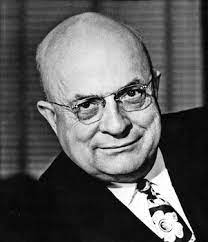
Henry Kaiser
* Nicknamed "Sir Launchalot" because his shipyard could build an entire ship in 14 days
* American Industrialist that became known as the Father of
modern American Shipbuilding
- Established Kaiser Shipyards on West Coast which built liberty ships to transport supplies and equipment for war
* American Industrialist that became known as the Father of
modern American Shipbuilding
- Established Kaiser Shipyards on West Coast which built liberty ships to transport supplies and equipment for war
7
New cards
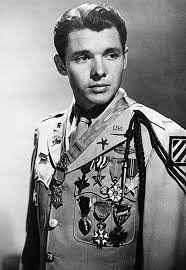
Audie Murphy
* Most decorated American soldier in WW2
* Received Congressional Medal of Honor
* His story is basis of the film "To Hell and Back"
- Enlisted at 17
- Received battlefield promotions
* Received Congressional Medal of Honor
* His story is basis of the film "To Hell and Back"
- Enlisted at 17
- Received battlefield promotions
8
New cards
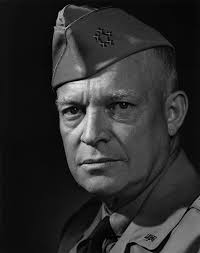
General Dwight Eisenhower
* Commander of SHAEF (Supreme Headquarters American Expeditionary Forces)
- Led operation torch (an invasion of North Africa)
- Picked by FDR to head liberation of Europe on Eastern front
- Led operation torch (an invasion of North Africa)
- Picked by FDR to head liberation of Europe on Eastern front
9
New cards
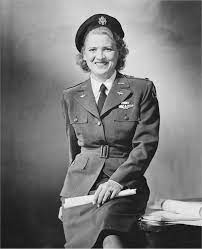
Jacqueline Cochran
* Contributor to formation Women Airforce Service Pilots
* Aviator
- Supervised training of hundreds of women who flew planes
from the factories to frontlines
- Holds more records than any other pilot dead or alive
* Aviator
- Supervised training of hundreds of women who flew planes
from the factories to frontlines
- Holds more records than any other pilot dead or alive
10
New cards

Virginia Hall
* Spy for OSS (Office of Strategic Services)
* Nicknamed Artemis
* Reported as "the most dangerous of all Allied spies" by the
Gestapo (German Secret Police)
- Forerunner of Central Intelligence Agency
- Smuggled into France before D-Day to organize resistance
fighters
- Awarded the Distinguished Service Cross for heroism
* Nicknamed Artemis
* Reported as "the most dangerous of all Allied spies" by the
Gestapo (German Secret Police)
- Forerunner of Central Intelligence Agency
- Smuggled into France before D-Day to organize resistance
fighters
- Awarded the Distinguished Service Cross for heroism
11
New cards

Oveta Culp Hobby
* Director of the WACs (Women's Army Corps) which was
created to fill the gaps due to shortage of men
* WACs were the 1st women other than nurses to be in Army
uniform
- Achieved rank of colonel
- First women in the Army to receive Distinguished Service
Medal
created to fill the gaps due to shortage of men
* WACs were the 1st women other than nurses to be in Army
uniform
- Achieved rank of colonel
- First women in the Army to receive Distinguished Service
Medal
12
New cards
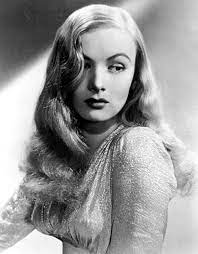
Veronica Lake
* Publicly restyled her "peek-a-boo" hairstyle because she
feared that the thousands of women copying her hair were
endangering themselves
* Accident rates for women fell 22% after her heroic haircut
- Movie Star
- Endured a famous haircut for patriotism
- Her movie career never really recovered
feared that the thousands of women copying her hair were
endangering themselves
* Accident rates for women fell 22% after her heroic haircut
- Movie Star
- Endured a famous haircut for patriotism
- Her movie career never really recovered
13
New cards
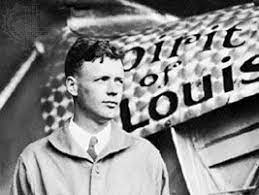
Charles Lindbergh
* Leader in anti-war America First movement
- FDR refused to reinstate his Army Air Corps commission
that he had resigned in April 1941
- After Pearl Harbor, he flew 50 combat missions in Pacific
as a civilian advisor to Air Force
- FDR refused to reinstate his Army Air Corps commission
that he had resigned in April 1941
- After Pearl Harbor, he flew 50 combat missions in Pacific
as a civilian advisor to Air Force
14
New cards
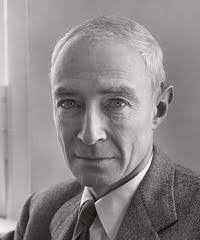
Robert Oppenheimer
* He served as director of the Los Alamos Laboratory during
the development of atomic bomb "the Manhattan Project"
- Physicist
- Angered by use of 2nd atomic bomb on Nagasaki
- Said "I am become death, the destroyer of worlds." after
testing the a-bomb
the development of atomic bomb "the Manhattan Project"
- Physicist
- Angered by use of 2nd atomic bomb on Nagasaki
- Said "I am become death, the destroyer of worlds." after
testing the a-bomb
15
New cards
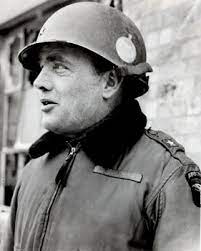
Anthony McAuliffe
* Acting division commander of 101st Airborne Division
(Screaming Eagles)
* Defended Bastogne, Belgium during the Battle of the Bulge
- Famous for saying "Nuts" in response to German Surrender
Ultimatum
(Screaming Eagles)
* Defended Bastogne, Belgium during the Battle of the Bulge
- Famous for saying "Nuts" in response to German Surrender
Ultimatum
16
New cards
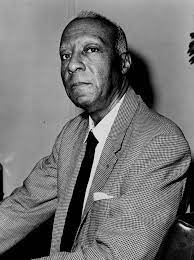
A. Philip Randolph
* Led March on Washington, convincing FDR to issue
Executive Order 8802 in 1941, banning discrimination in
defense industries during WW2
- Led 1st predominantly black labor union
Executive Order 8802 in 1941, banning discrimination in
defense industries during WW2
- Led 1st predominantly black labor union
17
New cards
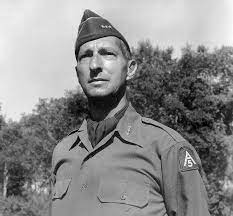
General Mark Clark
* Commander of US 5th Army in Italy
* Ordered destruction of religious abbey at Monte Cassino
- Captured Rome on June 5, 1944
- Critics argued that his tactics led to high casualties
* Ordered destruction of religious abbey at Monte Cassino
- Captured Rome on June 5, 1944
- Critics argued that his tactics led to high casualties
18
New cards
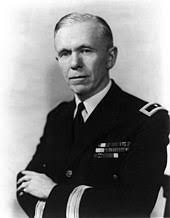
General George C. Marshall
* Army Chief of Staff
- Commander of US army during WW2
- Chief Military adviser of FDR
- Led the rapid growth of US forces , coordinated the Allies,
and promoted post war reconstruction of Europe
- Commander of US army during WW2
- Chief Military adviser of FDR
- Led the rapid growth of US forces , coordinated the Allies,
and promoted post war reconstruction of Europe
19
New cards
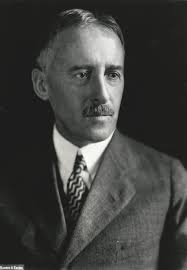
Henry Stimson
* Secretary of War to FDR (1940-1945)
- Led charge calling for war on Germany
- Oversaw the training 13 million soldiers/aviators
- Supervised spending of 1/3 of nations GDP on Army and
Air Forces
- Took personal control of construction and use of atomic
bomb
- Led charge calling for war on Germany
- Oversaw the training 13 million soldiers/aviators
- Supervised spending of 1/3 of nations GDP on Army and
Air Forces
- Took personal control of construction and use of atomic
bomb
20
New cards
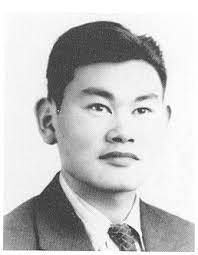
Fred Korematsu
* December 1944, Supreme Court ruled 6-3 in Korematsu vs US that exclusion order was justifiable in times of "Emergency and Peril"
- Challenged internship of Japanese-Americans
- Japanese-Americans were imprisoned without right to a
trial
- Challenged internship of Japanese-Americans
- Japanese-Americans were imprisoned without right to a
trial
21
New cards
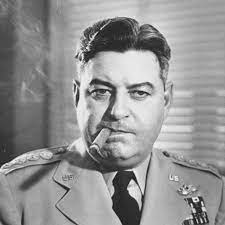
General Curtis LeMay
* Oversaw B-29 raids on Japan (US Army Air Corps)
* Ordered bombers to strike at night using incendiary bombs
* Firebombing Japanese cities created firestorms
- High altitude bombing proved ineffective over Japan
- March-August 1945, the raids killed around 330,000
Japanese
* Ordered bombers to strike at night using incendiary bombs
* Firebombing Japanese cities created firestorms
- High altitude bombing proved ineffective over Japan
- March-August 1945, the raids killed around 330,000
Japanese
22
New cards
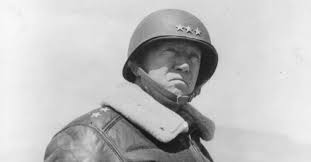
General George S. Patton
* Commander of US 3rd Army "Old Blood and Guts"
* Organized a relief operation to counter attack German
Wehrmacht at the Battle of the Bulge
- Aggressive General who was nearly fired for slapping a
soldier for cowardice
- Adopted German tactic of armored blitzkrieg
- One of the most effective combat commanders of WW2
* Organized a relief operation to counter attack German
Wehrmacht at the Battle of the Bulge
- Aggressive General who was nearly fired for slapping a
soldier for cowardice
- Adopted German tactic of armored blitzkrieg
- One of the most effective combat commanders of WW2
23
New cards

General Holland Smith
* "Father" of modern US amphibious warfare
* Led invasion of Iwo Jima
- "Howlin' Mad"
- Trained military in ship to shore warfare (major factor in successful US landings in Europe and Pacific
* Led invasion of Iwo Jima
- "Howlin' Mad"
- Trained military in ship to shore warfare (major factor in successful US landings in Europe and Pacific
24
New cards

Jimmy Doolittle
* The Doolittle Raid: Viewed as a major-morale building victory for US in opening months of Pacific War
- Led top-secret attack on Tokyo by 16 B-25 bombers from aircraft carrier USS Hornet
- Led top-secret attack on Tokyo by 16 B-25 bombers from aircraft carrier USS Hornet